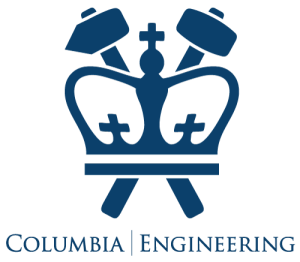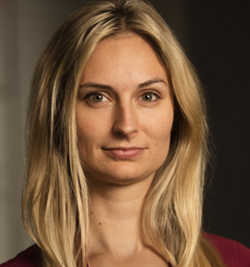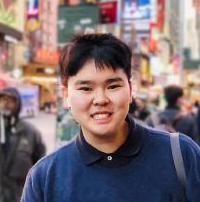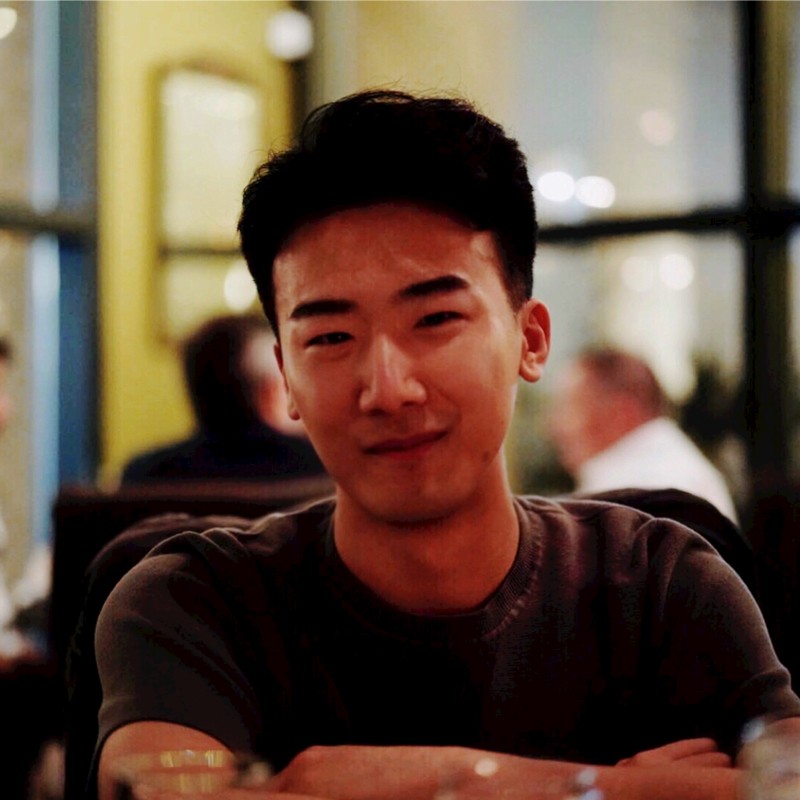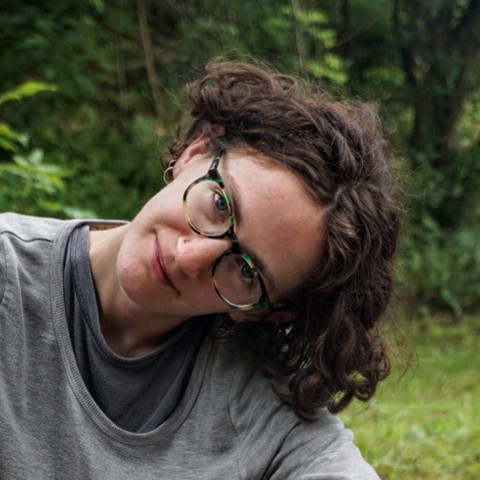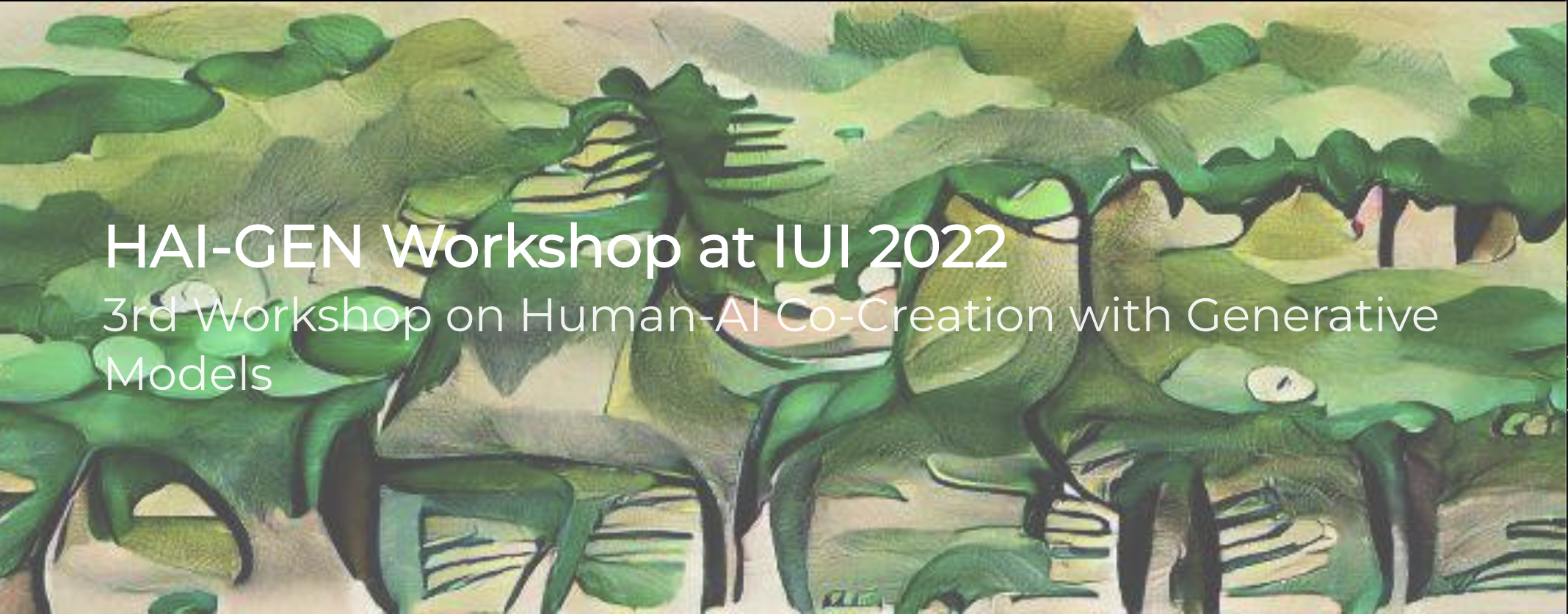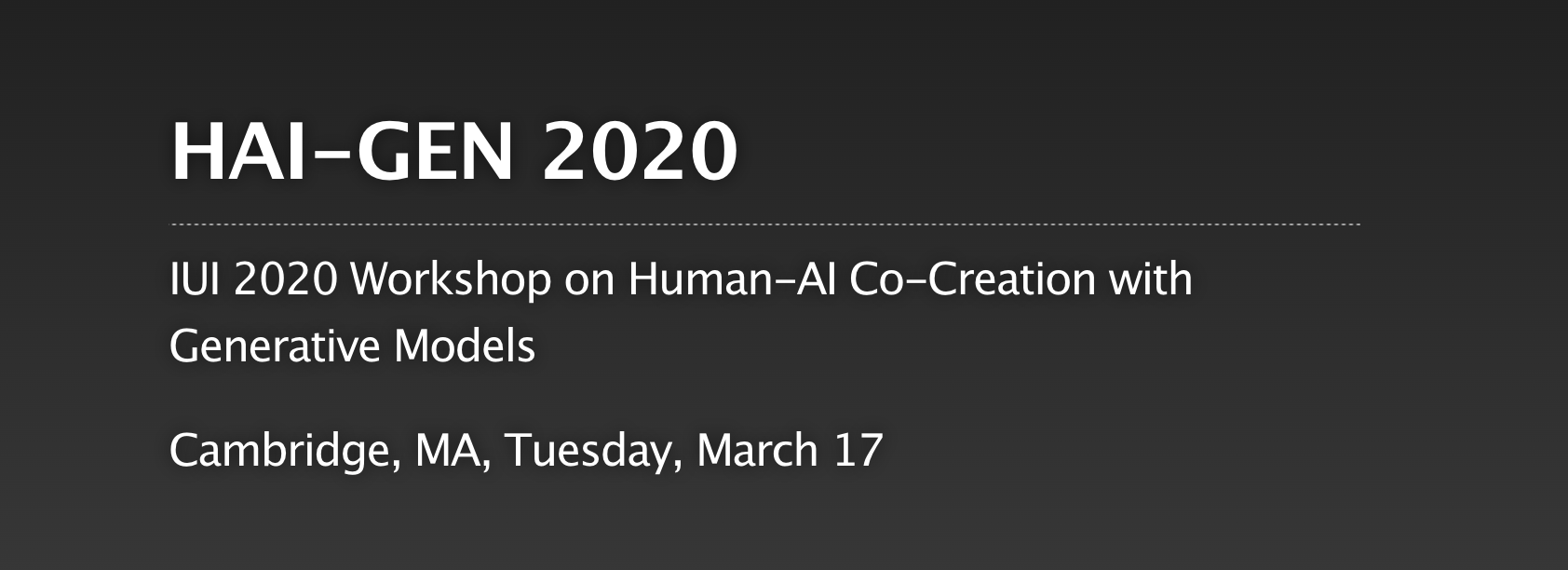Publications
Audience Impressions of Narrative Structures and Personal Language Style in Science Communication on Social Media
Grace Li, Yuanyang Teng, Juna Kawai-Yue, Unaisah Ahmed, Anatta S. Tantiwongse, Jessica Y. Liang, Dorothy Zhang, Kynnedy Simone Smith, Tao Long, Mina Lee, Lydia B Chilton
Under submission
PDF
Facilitating Team Awareness through Ambient Displays.
Sarah Morrison-Smith, Lydia B. Chilton, Jaime Ruiz.
Microsoft’s Symposium on the New Future in Work. (2020).
How Novelists Use Generative Language Models
Alex Calderwood, Vivian Qiu, Katy Ilonka Gero, Lydia B. Chilton
HAI-GEN Workshop Paper at IUI 2020
WordBlender: Principles and Tools for Generating Word Blends
Sam H. Ross, Ecenaz Jen Ozmen, Maria Kogan, Lydia B. Chilton
IUI 2020.
(Workshop) Addressing the Accessibility of Social Media
Cole Gleason, Patrick Harrington, Benjamin M. Gorman, Andres Monroy-Hernandez, Garreth Tigwell, Lydia B. Chilton, Hernisa Kacorri, Meredith Ringel Morris, Shaomei Wu
CSCW 2019
https://socialandaccessible.wordpress.com/
Low Level Linguistic Controls for Style Transfer and Content Preservation
Katy Gero, Chris Kedzie, Jonathan Reeve and
Lydia B. Chilton
INLG 2019
Making Memes Accessible.
Cole Gleason, Amy Pavel, Xingyu Liu, Patrick Carrington, Lydia B. Chilton, Jeffrey P. Bigham.
ASSETS 2019
Human Errors in Interpretation of Visual Metaphors
Savvas D. Petridis, Lydia B. Chilton.
Creativity & Cognition 2019
VisiBlends: An Interactive Pipeline for Creating Visual Blends (Short Version)
Lydia B. Chilton, Savvas D. Petridis, Maneesh Agrawala.
Collective Intelligence 2019.
VisiBlends: An Interactive Pipeline for Creating Visual Blends
Lydia B. Chilton, Savvas D. Petridis, Maneesh Agrawala.
CHI 2019
Cicero: Multi-Turn, Contextual Argumentation for
Accurate Crowdsourcing
Jim Chen, Jonathan Bragg, Lydia B. Chilton, Daniel S. Weld.
CHI 2019
MicroTalk: Using Argumentation to Improve Crowdsourcing Accuracy
Ryan Drapeau, Lydia B. Chilton, Jonathan Bragg, Daniel S. Weld
HCOMP 2016
HumorTools: A Microtask Workflow for Generating News
Satire
Lydia B. Chilton, Daniel S. Weld, James A. Landay.
In submission.
Frenzy: Collaborative Data Organization for Creating
Conference Sessions
Lydia B. Chilton, Juho Kim, Paul Andre, Felicia Cordeiro,
James A. Landay , Daniel S. Weld, Steven P. Dow,
Robert C. Miller, Haoqi Zhang.
CHI 2014.
Honorable Mention for Best Paper
Cascade: Crowdsourcing Taxonomy Creation
Lydia B. Chilton, Greg Little, Darren Edge, Daniel S.
Weld, James A. Landay.
CHI 2013.
Community clustering: Leveraging an academic crowd to
form coherent conference sessions.
Paul Andre, Haoqi Zhang, Juho Kim, Lydia B. Chilton,
Steven P. Dow, and Robert C. Miller.
HCOMP 2013.
Honorable Mention for Best Paper
Cobi: A community-informed conference scheduling tool.
Juho Kim, Haoqi Zhang, Paul André, Lydia B. Chilton,
Wendy Mackay, Michel Beaudouin-Lafon, Robert C.
Miller, and Steven P. Dow.
UIST 2013.
Addressing Users' Queries directly in the Web Search Results
Lydia B. Chilton, Jaime Teevan
WWW 2011.
Task Search in a Human Computation Market
Lydia B. Chilton, John J. Horton, Robert C. Miller, Shiri
Azenkot.
KDD-HCOMP 2010.
Exploring Iterative and Parallel Human Computation
Processes
Greg Little, Lydia B. Chilton, Max Goldman, Robert C.
Miller.
KDD-HCOMP 2010.
TurKit: Human Computation Algorithms on Mechanical
Turk
Greg Little, Lydia B. Chilton, Max Goldman, Robert C.
Miller.
UIST 2010.
The Labor Economics of Paid Crowdsourcing
John J. Horton, Lydia B. Chilton
ACM E-Commerce 2010.
Seaweed: A web application for designing economic
games.
Lydia B. Chilton, Clayton T. Sims, Max Goldman, Greg Little, and Robert C. Miller.
SIGKDD HCOMP 2009.
Tabulator: Exploring and analyzing linked data on the
semantic web.
Tim Berners-Lee, Yuhsin Chen, Lydia B. Chilton, Dan
Connolly, Ruth Dhanaraj, James Hollenbach, Adam
Lerer, and David Sheets.
Semantic Web User Interaction Workshop, 2006.
Why We Customize the Web
Lydia B. Chilton, Robert C. Miller, Greg Little, and Chen-Hsiang
Yu.
Chapter In A. Cypher, M. Dontcheva, T. Lau, and J.
Nichols, eds., No Code Required: Giving
Users Tools to Transform the Web, Elsevier, 2010.
Rewriting the Web with Chickenfoot
Robert C. Miller, Michael Bolin, Lydia B. Chilton, Greg
Little, Matthew Webber, and Chen-Hsiang Yu.
Chapter In A. Cypher, M. Dontcheva, T. Lau, and J.
Nichols, eds. No Code Required: Giving Users Tools to
Transform the Web, Elsevier, 2010.
